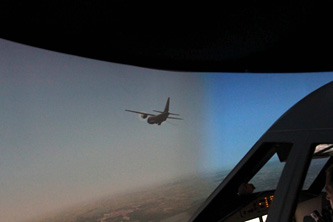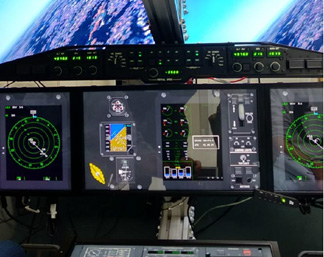
SESAR members and partners recently completed tests showing how trajectory-based operations (TBO) – a cornerstone in SESAR’s vision of maximising airspace capacity – can cater to complex military operations in a smooth and efficient manner.
TBO is designed to enable airspace users of all categories to fly their preferred flight trajectories. That includes military airspace users who require flexible access to the airspace to allow the swift movement of forces, for instance, as well as the organisation of missions and training operations.
TBO acts as a glue that binds together the many inter-dependent factors that impact the trajectory. The SESAR R&D programme includes several solutions that will enable trajectory synchronisation as well as investigating how to increase flight trajectory predictability.

In the latest tests, SESAR members Leonardo ran a series of simulations involving a military airlifter and a regional aircraft with the latest avionics capabilities, as well as air traffic control to demonstrate that TBO was feasible, even in cases of complex manoeuvres, such as air-to-air refuelling.
Several means of communications were used between the aircraft and air traffic control, including CPDLC data link for the military aircraft, which pilots said was useful to have as well as the auto uploading of way points into the mission management system. Feedback on the ground was also positive as the ADS-C contract with ATC gave controllers good situational awareness of the military aircraft.
These latest tests confirm that military aircraft have the avionics capabilities necessary for carrying out missions within a TBO environment. Further tests will now take place on other types of military aircraft.
This project has received funding from the SESAR Joint Undertaking under the European Union's Horizon 2020 research and innovation programme under grant agreement No 734161.
